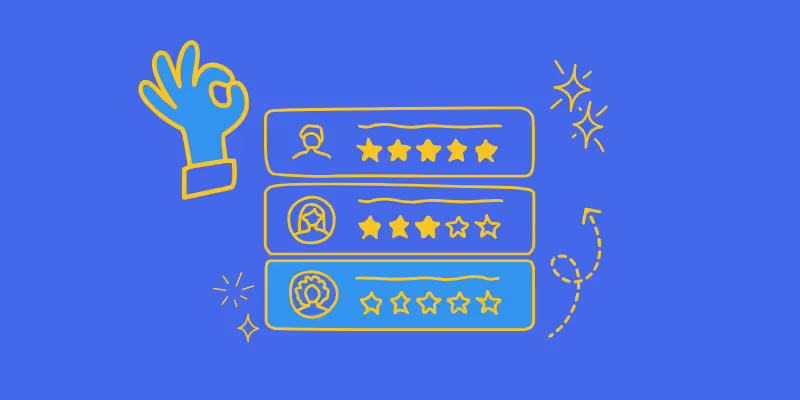

Product Enablement: The Questions You Might Have
Product enablement is a term you might have heard floating around, but never quite understood. Today we’ll be answering commonly asked questions about the topic and giving you a general overview of the area.
What Is Product Enablement?
Product enablement isn’t easy to define. It’s a blanket term that comes from the term sales enablement - the process of giving your sales team what they need to sell more effectively. Product enablement is similar in concept but applies to your entire organization. It’s about making sure that your product is the best it can be by providing your teams with the knowledge they need to make it happen.
Product enablement takes different forms depending on the department that’s being catered to. Your customer support team might get training in a product’s capacities, purpose etc., in order to provide a higher level of knowledge to those they talk to. The design team meanwhile will be given information on features that customers liked and disliked so they can improve the product at the next iteration.

What’s The Difference: Product Enablement & Customer Enablement
Customer enablement is, shockingly, customer focused. That means it looks entirely at processes that improve customer experience, with the end goal of improving the overall experience that a customer has with you. This means that it will hyperfocus on the customer-facing sections of your organization, leaving the other departments to the side.
The main difference between product enablement and customer enablement philosophies is simply what they think is more important. A customer enablement approach grants information to customers in order to help them use your products and educate them about their capabilities, whereas the product enablement philosophy says that the knowledge needs to be provided to your employees first so that they might then pass it on.
How Do You Create An Enablement Plan?
When you’ve decided to create a product enablement plan, you need to start from the basics. There are several simple steps which you should follow:
- You need to decide what you want to get out of your plan. What are your objectives? What do you want the result of this plan to be? You need to make these clear, with numbers if you can.
- Once you know what you want to do, you need to figure out how to go about doing it. This means you need information. Gather the relevant data, ask your teams for information etc.
- Analyze your data. Where are the weak points that might see improvement? Is it in your customer-facing team or further up the chain?
- When you know what the issues are, you can then make a plan to address them. To do that, you need information relevant to that specific area. What resources do you have available? Is a pain point able to be solved easily? Will the solution be worth the cost you’re putting in? That last question is especially important as all organizations need to be cost-effective to survive in today’s markets.
- Implement, re-analyze, and improve. Did the plan work out as expected or were there unforeseen obstacles? Was a certain tool or process less effective than you thought it would be?
How Do You Create A Successful Sales Enablement Strategy?
Sales enablement is different to product enablement only in that it focuses on your sales team alone. Any team will run into issues if they don’t have the right resources to work with, and the sales team is no different. Below you’ll find some tips on creating and implementing a sales enablement strategy, with the ultimate goal of increasing revenue.
Create a playbook
When your team has a playbook or a rough framework to follow, it’ll make their job a lot easier. While it might seem a bit impersonal to just go through the motions with your customers, it’s important to give them all the information that they need, and a playbook will help with that.
Establish goals
If you’re making a strategy, you need to have some metric by which you can judge if it was successful or not. Establish a KPI and other performance indicators to test your strategy with.
Collect information in a central database
It’s important to keep your team informed, and we’re not just talking about what they need to do. By keeping them up to date on your goals and intentions, they can see the why and how of things and follow the spirit of your strategy, not just the letter.
Measure, analyze, re-optimize
Sales enablement isn’t something you do once, then are done with forever. It’s an evolving strategy that needs constant improvement, especially since the theoretical and the practical side of things might not overlap so well.
Keep an eye on how your strategy progresses - are things going the way you predicted? Is there a way you could better the effects? Constant improvement means better sales.
What’s The Difference: Product Engagement & Enablement?
Product engagement is a similar term to product enablement, the difference being where the focus lies. In product enablement, you focus on your team and give them the resources they need to pass on information effectively - in product engagement you find ways to pass this information directly to the customer.
If product enablement is arming your team with knowledge, product engagement is arming your customer through effective communication and data. The two often work together, with the ideal strategy involving both.
What Skills & Resources Do You Need To Empower Product Enablement?
The resources you’ll need to empower your team depends largely on what industry you’re in and how your product functions. That being said, there are a few common denominators which can be applied across all industries - information transfer and tutorials.
Here at Guidde we’re fully equipped to help you pass on information to your customers, whether it be a generic tutorial that sees repeated use, or a direct communication aimed at addressing specific issues your customer has.
The knowledge we help provide will last forever, and with two-way communication and first-person perspective enablement, you’ll find dealing with your customers' issues easier than ever. Our Spaces feature allows you to categorize and silo information, so whether it’s FAQs, tutorials or webinars you’ll be fully prepared for the challenges to come.
Why not try Guidde today?









